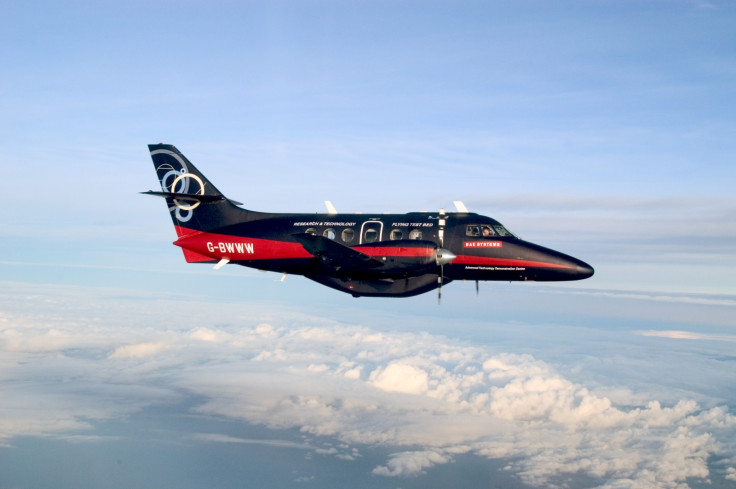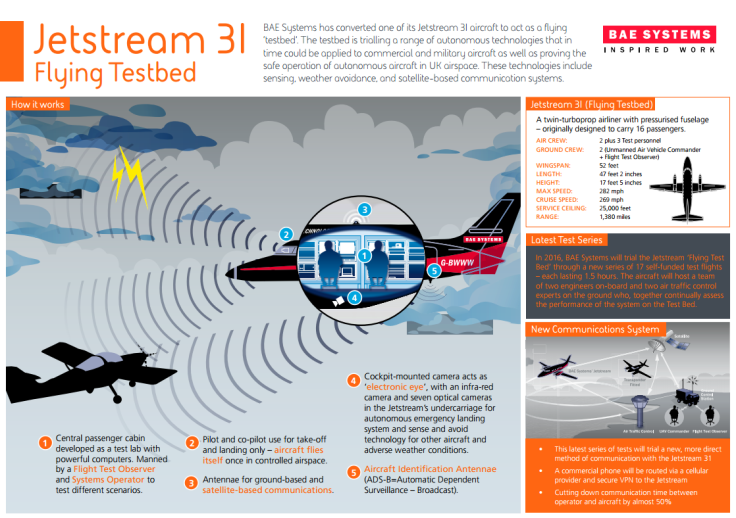Self-flying pilotless plane completes test flight and could be landing at airports by 2020
Autonomous aircraft from BAE Systems flew a 300-mile trip using system of sensors.

The rise of self-driving car technology has grabbed public attention over the past few years but what about self-flying planes? In the future where we're going we may not need roads as pilotless planes are being put through their paces.
BAE Systems, a British defence company, is currently testing robotic planes in the bid to pave the way for unmanned commercial flights and has successfully logged trials whereby its autonomous technology has taken over the controls 15,000ft high in the sky.
For the trials human pilots assist with take-off and landing but when they flick the switch to robotic mode the converted Jetstream 31 – a small jet capable of carrying 16 passengers – uses a cockpit-mounted infrared camera, known as the "electronic eye". A network of seven other cameras located on the underside of the craft and a collision avoidance system cruise without pilot interference.
The test flight is a 300 mile journey from Lancashire, UK, to Inverness in Scotland, with the intention to navigate itself even around adverse weather during the 90-minute jaunt. On terra firma there's a team of engineers who observe the flight and communicate via satellite and radio controls from a mobile control station to assist where needed during these early days of testing.
The route has been specifically chosen as it's a non-congested path for the £400,000 test programme where it's taking baby steps to refine its technology to determine how well its on-board systems can detect weather and ominous clouds without the need for radar.

The end goal is to introduce the pilotless plane into controlled airspace by 2020 and also see the autonomous technology employed on unmanned fighter jets for combat scenarios. It could mean that this autopilot 2.0 will take the strain off human pilots and reduce the number of staff needed for flights. Ultimately, by 2020 it may mean our captain could be a computer chip, and if a bit of turbulence worries you, you may be asking for a lot more gin and tonic to calm those nerves.
© Copyright IBTimes 2024. All rights reserved.






